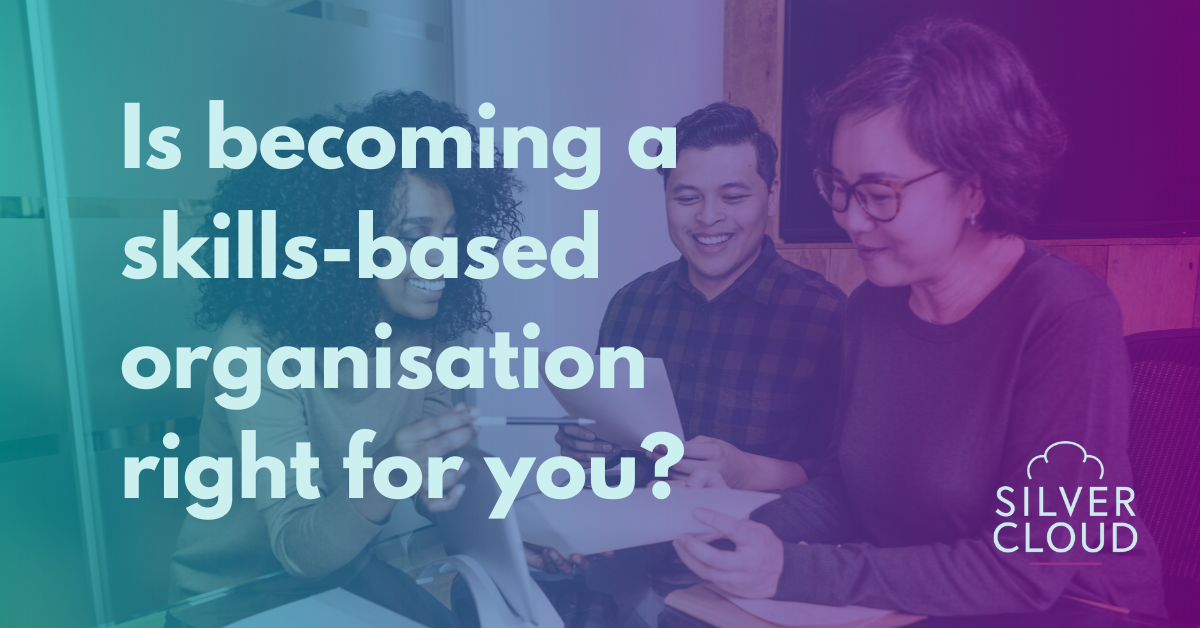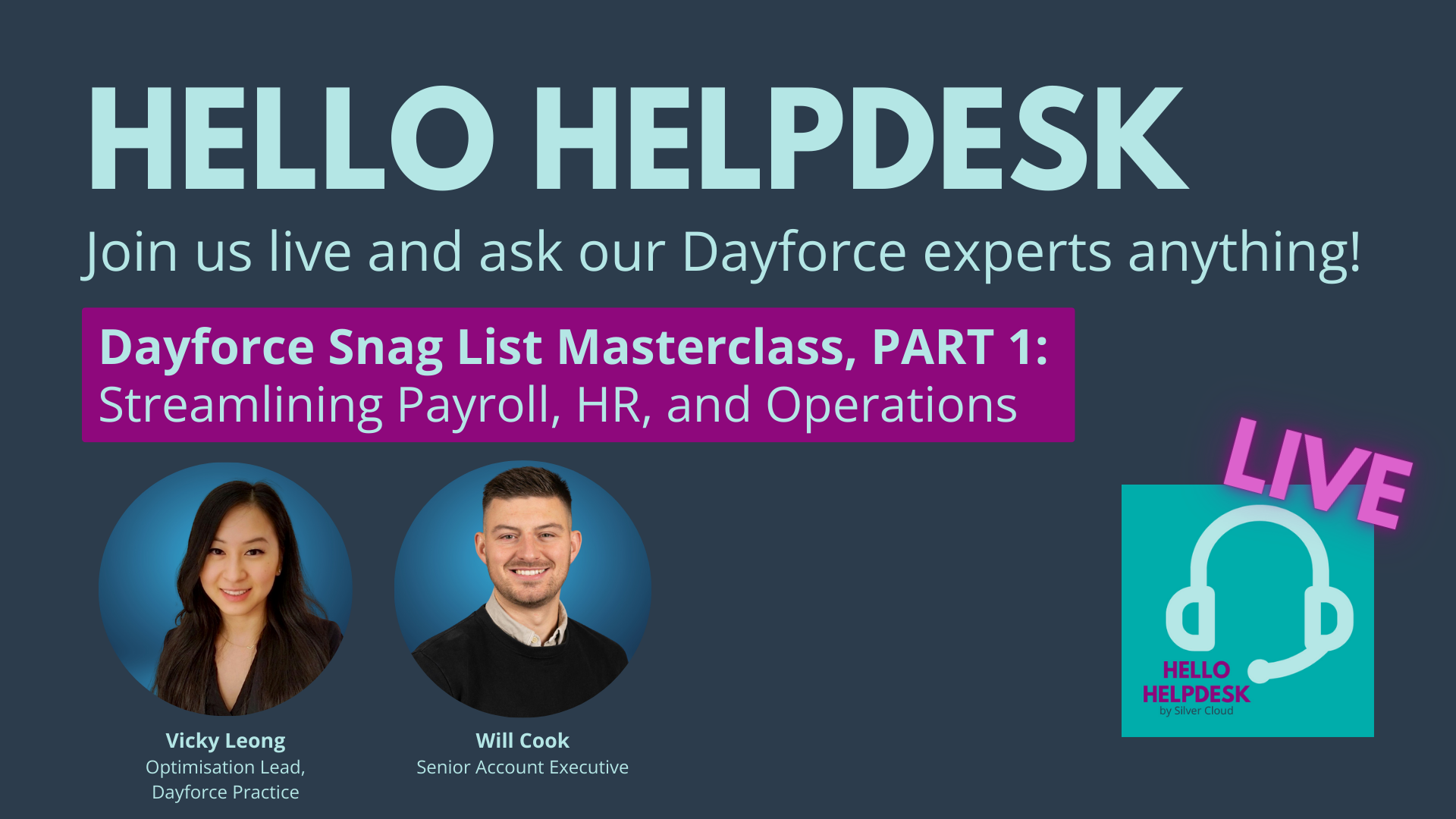How to make a convincing case for digitising HR | Silver Cloud HR
by Silver Cloud

We live in a digital world. On average, people have 5.54 social media accounts, the daily time spend on social averages 116 minutes and every second, over 56,000 Google searches are made. We are going about our everyday lives at the pace we command; communicating easier and quicker than ever before.
So, why is it so difficult to make a convincing case for digitising HR? By that, we mean changing operational HR processes to become automated and data-driven to meet the demands of today’s employees.
Up until recently, the focus has centred on HR technology providing efficiency gains to the HR department. Whilst making better use of HR budgets of course impacts positively on an organisation, there hasn’t been enough attention on the wider business benefits.
This is echoed in the People and machines: from hype to reality report by the CIPD and PA Consulting, released earlier this week. HR remains the least likely business department to be involved in decisions regarding AI and automation in the workplace. A mere 55% of those surveyed said they were involved in such decisions.
Yet, AI enables companies to quickly recruit employees that are an exact fit for an organisation. It can estimate the expected time taken to fill a vacancy and use pre-existing data to predict the likelihood of their success. What’s more, the benefits are directly translatable into business profitably, as Workday points out:
“Where the HR organisation was once seen as mostly a back-office function, progressive CHROs are now becoming the most vocal and visible agents of internal transformation.”
AI and automation technologies enable HR Directors to:
- Create a strong employee brand to attract the right talent
- Improve their employee experiences
- Make better use of HR budgets
- At a more advanced stage, forecast using predictive analytics
Put simply, AI is giving HR Directors the opportunity to solve business challenges - and recruitment and retention are right up there with the biggest challenges businesses face. So, how do you make your case for digitising HR?
It depends on the type of organisation you work for. Let your company’s business strategy guide you. If you are working for a promising start-up company, you might want to focus on digitising recruitment processes to cope with a rapid growth. If you are reprioritising or downsizing, employee engagement and retention will be crucial.
Let’s look at a typical talent lifecycle and consider where the tangible business benefits might come from and how you could make a convincing case for digitising HR.
Attracting talent
AI can be used to identify highly-suitable candidates even before a person is looking for a new role. During this part of the talent lifecycle, the aim is to identify as many potential candidates as possible; those who not only fit immediate vacancies but future roles – to help the business grow.
For example, we’re seeing more companies proactively using chatbots to attract candidates. The technology offers potential employees the chance to ask questions that are responded to using natural language processing. It gives candidates a direct opportunity to explore your organisation before applying. Videos can also be embedded to give a realistic preview of what it’s like to work at your organisation. This is critical in industries where the competition for attracting high calibre personnel is strong.
AI algorithms can even be used to skill-match roles to professional traits contained within a candidate’s CV and make job recommendations based on the data. This can hugely increase the chance of converting potential matches into successful job applicants and vastly expand your company’s talent pool.
Tip: Take a business-critical part of the organisation where the talent pool is smaller and more challenging. Using data, demonstrate how it is becoming more difficult to attract the right candidates. You’ll be in a much stronger position to show how digitising this aspect of talent management can have a direct business impact.
Hiring talent
Hiring the wrong person for a role can negatively impact an organisation. According to a recent Robert Half study of almost 5,000 managers in 13 countries agreed that hiring the wrong person will:
- increase the workload for colleagues (50%)
- increase colleague stress levels (39%)
- result in lost productivity (33%)
A robust data-driven recruitment strategy is something that must be considered as part of a long-term broader corporate strategy.
In larger organisations, effective prioritisation of recruitment requires the careful selection of applicants. But the role of the recruiter is often pressured as they fight to meet the competing demands of each department.
Digitising this part of the HR process takes away the grunt-work. AI software platforms generate predictive scores based on biographical data in candidate CVs, which can be used to determine future performance.
This significantly frees-up the recruiter’s time to enable them to build better relationships with prospective candidates, leading to a far more efficient talent acquisition process.
Tip: Paint a picture of your current recruitment pain-points. If there are areas where work could be easily automated, be ready with the data to back this up. If presented effectively, you’ll be able to show how AI can enable your organisation to develop employee skills in sync with shifting market demand.
Managing talent
Persistent barriers to growth, such as employee disengagement and stagnancy can be addressed through the considerate application of AI solutions.
If HR wants to deliver profitability, they need to be asking the right questions. Consider 'employee engagement' for instance. What value does an engaged employee deliver to your organisation vs. somebody who has simply switched off? In most cases, the answer will be - we simply don't know. As an HR Director, it could be the start of a great conversation that leads to a well-funded project.
Through AI, it’s possible for managers to gain much greater insight into the factors that influence an individual’s performance. This involves what Workday refers to as “unifying applications to better link insights to actions”.
Let’s consider for a moment that your sales team is struggling to meet its weekly quota due to a lack of technical knowledge. A digital HR solution could be used to personalise learning to address the skills gap. An AI solution could identify specific, individual training needs and expected outcomes. It could also track who has and hasn’t completed the training, and where an individual might need additional support. You would expect to see an increase in sales; a direct ROI.
Tip: Decide what you want your data to do and clearly relay this to management. If they can make the connection as to how people analytics data can be used to manage risk, you’ll be much more likely to elicit a positive response.
Staff retention
Think. Would your organisation benefit from knowing when an employee might be at greater risk of leaving? Or perhaps you want to be able to identify when an employee is ready to progress within their role?
Although the right person for the job is more likely to adapt to the company's culture and stay with the team for years to come, employee experience is still vital.
Used in the right way, it’s not impersonal. Quite the opposite. Data can create an environment where business employees feel supported to do their best at work and stay in position.
AI enables you to introduce high-touch approaches to employee development and retain talent at risk of turnover. Using biometrics, communication analysis and natural language processing, sentiment analysis can recognise why and when employees become disengaged. Essentially, HR technology enables managers to address pain points before any red flags appear.
Tip: To make your business case, include the phrase “in order to”. For example, consider this statement. We want to introduce real-time employee sentiment software within our customer contact centres in order to increase employee satisfaction by X, which will lead to a Y reduction in staff leaving, and a Z increase in customer satisfaction. You’ll need to be ready with your data. But try and keep it simple and uncluttered.
Remember, there should always be a direct line of sight from AI applications to the associated ROI. Establishing this early on will greatly improve your chances of maintaining buy-in throughout the life-span of your digital HR journey.
Time to get started on your business case?
Get your copy of the Ultimate Guide to an Unbeatable Business Case today.




